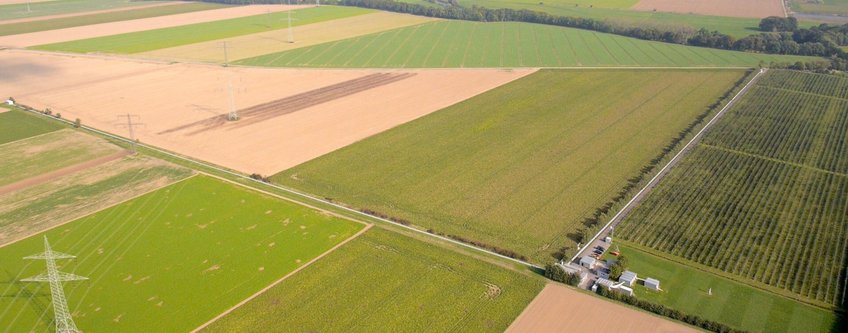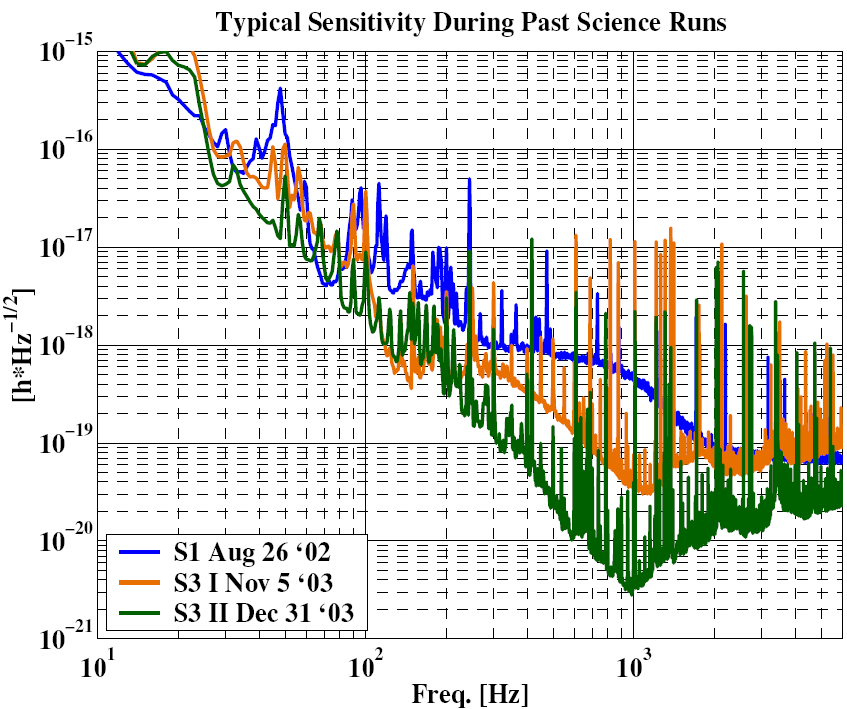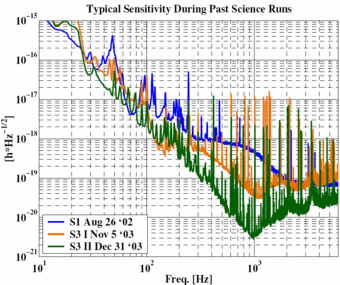
2004
Upgrade of the detector
Most of the time in 2004 has been spent to upgrade the detector in order to prepare it for the next science run. Several electronic noise sources have been eliminated.
The successful attendance of the GEO/LIGO S3 science run clearly demonstrated that the duty cycle of the GEO detector was already very good. Hence the highest priority in the beginning of 2004 was to improve the sensitivity. New tools have been developed to understand which noise source and which coupling path contributes to the overall noise budget and several candidates were identified. First we installed an improved photodiode in the detector output and optimized the gain distribution in the length control system that keeps the interferometer at a dark fringe. The same was done in the length control loop of the signal recycling degree of freedom. Both changes together improved the low frequency sensitivity by a factor of 20.
The noise investigations had to be interrupted in order to improve the performance of the output signal. The three mirrors of the output telescope were suspended as triple pendulums in the vacuum system and the optical layout on the detection bench was rearranged. Furthermore, the air conditioning system was upgraded and the anchors of the vacuum system were strengthened.

Once the old sensitivity and stability of the detector was recovered, the power noise of the laser light behind the modecleaners was discovered as a dominant noise source. Thus a second laser power stabilization loop was designed and installed to further improve the sensitivity. Progress in the sensitivity improvement stopped for several months in which we were "hunting" the limiting noise source which was finally identified as scattered light from the signal recycling bench. The optical components on that bench were exchanged by ones of higher quality and the optical setup was rearranged which substantially reduced the noise caused by scattered light from this bench.
The last large sensitivity improvement was achieved in December when the laser power injected into the modecleaners was increased by a factor of two to 6 W. This brought the sensitivity in the 1 kHz region very close to the 10-21 level which we hope to cross early in 2005.
The sensitivity improvement was accompanied by maintenance work on the automatic control system and data acquisition system. For both, the computers were upgraded and new software has been installed.
GEO is the only gravitational wave detector in the world that uses the advanced technique of signal recycling. This technique improves the shot-noise limited sensitivity in a restricted Fourier frequency band for the prize of a more complicated optical readout scheme. This requires an advanced calibration scheme as a gravitational wave would see different frequency-dependent transfer functions of the two quadratures detected. Based on simulations and experiments and aided by a number of calibration lines, a reliable well-understood online time domain calibration scheme was implemented that makes the calibrated data available with only a small delay of several minutes.
Based on the achievements in online calibration and in automatic operation of the detector, we started semi-continuous data taking in August. This means that we measure, calibrate and store the data whenever no commissioning work is done on the detector and all subsystems are functioning well. This is usually the case over night and on weekends. Between August and the end of 2004 we were able to acquire more than 1300 hours of "science quality" data with a duty cylce of better than 93 %. These data were made available to the data analysis teams searching for gravitational waves.
In November/December the foundations of a new office container have been laid that will make work at Ruthe more comfortable.
S4: scheduled for February 23, 2005.
